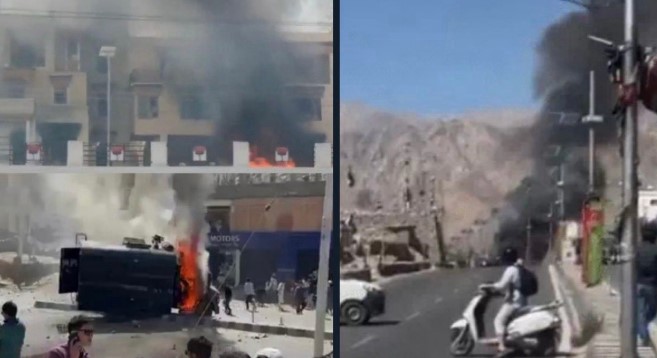The ongoing Ladakh violence has plunged the Himalayan region into turmoil, with at least four people confirmed dead and dozens more injured as widespread protests demanding statehood and constitutional protections escalated into intense clashes in the capital, Leh.
This wave of unrest has exposed deep-seated frustrations over political representation, economic marginalisation, and the perceived inadequacies of the current Union Territory administration imposed by New Delhi.
The roots of Ladakh’s discontent
Ladakh, previously a part of the erstwhile state of Jammu & Kashmir, was carved out as a separate Union Territory in August 2019. However, unlike Jammu & Kashmir, Ladakh was left without its own legislature. The move, intended to give Ladakh direct oversight from Delhi, instead led many locals, especially students and youth, to feel disenfranchised and voiceless in their future prospects.
Over the past few years, prominent leaders and activists, notably environmentalist Sonam Wangchuk, have spearheaded campaigns demanding statehood for Ladakh and its inclusion under the Sixth Schedule of the Indian Constitution.
Such protections are seen as vital for safeguarding the region’s unique cultural, environmental, and demographic identities against external economic and political pressures.
Ladakh violence: From hunger strike to violence
The agitation reached a boiling point this past week when a hunger strike, led by Sonam Wangchuk and supported by the Leh Apex Body and the youth, entered its 15th day. The situation escalated dramatically after two of the fasting protestors, an elderly man and woman, were hospitalised due to deteriorating health, which ignited outrage and calls for a region-wide shutdown.
On the morning of September 24, thousands gathered in Leh to march toward the hunger strike site and further on to the local offices of the Bharatiya Janata Party (BJP). Protestors, many of them youths, clashed with police and paramilitary forces, pelting stones and pushing through barricades. In the chaos, the BJP office was set ablaze, a police van was torched, and multiple vehicles were vandalised.
Police responded with tear gas, baton charges, and, according to protestors and local activists, eventually resorted to live firing. Official reports confirm at least four deaths (with some accounts suggesting up to five), and over 60 people, including both protestors and police, have been hospitalised with varying degrees of injuries.
Curfew and crackdown
In the immediate aftermath, the Leh administration imposed a strict curfew under Section 163 of the Bharatiya Nagarik Suraksha Sanhita (BNSS), prohibiting gatherings of more than five people, banning processions, rallies, and even vehicle-mounted loudspeakers without official approval. This lockdown-style response seeks to restore order, but has further fueled local resentment, with many accusing the authorities of stifling democratic expression.
With internet blackouts and security forces patrolling deserted streets, the sense of siege in Leh is palpable. Leaders from all sides, including Wangchuk, have appealed for calm and urged youth to shun violence, warning that such escalations only undermine the legitimacy and objectives of the protest movement.
Stakes for Ladakh
The core demands of the protestors are: statehood for Ladakh, constitutional safeguards for land and jobs under the Sixth Schedule, and a democratically elected government to replace direct Delhi rule. With the region sharing a sensitive international border with China, the turmoil has also raised alarm in New Delhi about strategic vulnerabilities in this already fragile frontier.
The Union government has called for renewed talks with the Leh Apex Body and Kargil Democratic Alliance on October 6, hoping to defuse tensions. However, the deaths and violence have hardened positions on the ground, and the youth, frustrated by joblessness and lack of political voice—remain volatile.
